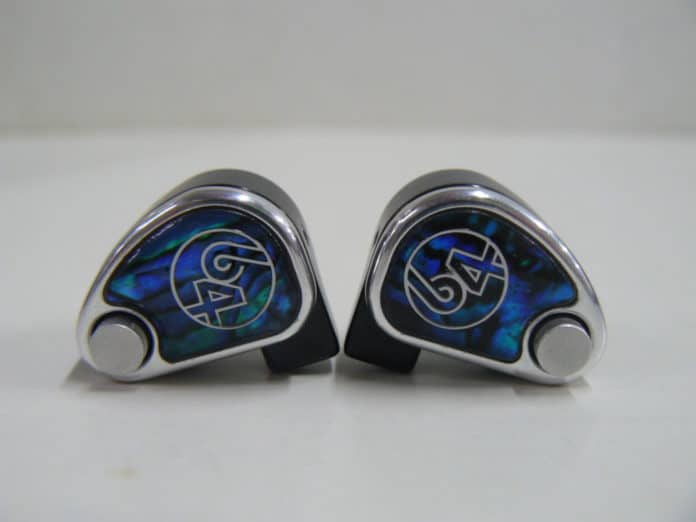The season of IEMs continues with the latest universal-fit earphone from 64 Audio. This time it’s the Nio, which goes for the price of $1,699. 64 Audio has made a name for themselves in audiophile circles for their impressive designs and their complex driver systems. Their past ventures include the U18t, the tia Fourte, and the tia Trio. With the Nio, 64 Audio introduces a number of new features that make this IEM stand out in the marketplace. I recently reviewed the Halcyon by AAW, which introduced a BassFlow control system by attaching different nodes onto the earphone itself. The Nio has a similar system but does a completely different job.
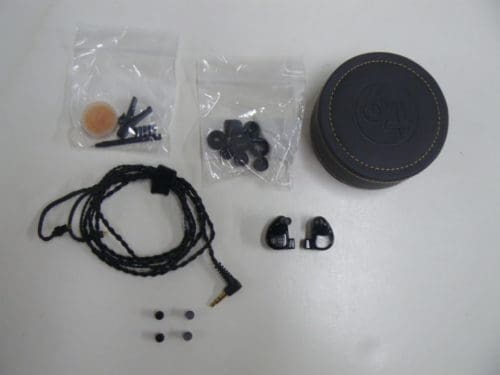
What You Get
Let’s start with the basics, and talk about what each package of the Nio comes with. Sliding open the box you’ll find the earphones themselves protected in their respective inserts, and attached to a 48 black premium cable. In the same area, you’ll find the apex modules, the m20, and MX labeled clearly to avoid confusion due to their similar-looking nature. The M15 module will already be attached to the IEM itself. Other accessories include a premium leather case, which inside you’ll find two ziplock bags, one containing a cleaning tool and shirt clip, and the other 6 pairs of ear tips.
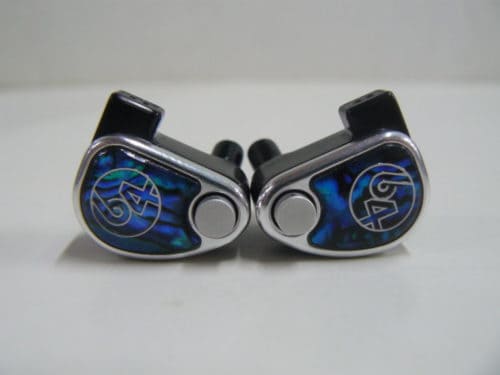
Looks and Feel
I was impressed when presented with 64 Audio’s fresh new glossy design for the faceplate of the Nio, as opposed to the usual matte finish they more often use. This is a far more shapely design that I found a lot more pleasing. The silver rimming is an especially nice touch and the Abalone inlays feature an aesthetically pleasing mix of colors under a flashy logo. What isn’t so pleasing about the Nio is the return of the long skinny nozzle. I don’t have a problem with this design in theory. The issue here is that the Nio lacks a lip on its nozzles, meaning the ear tips just slide down, leaving the tip of the nozzle partly exposed. The Nio still feels secure, but the nozzle grill can still be felt which can be annoying. The first time I put the Nio in my ear, I could feel that they were cold, which went away after a short time but was still notable. This issue is mostly solved when using foam tips.
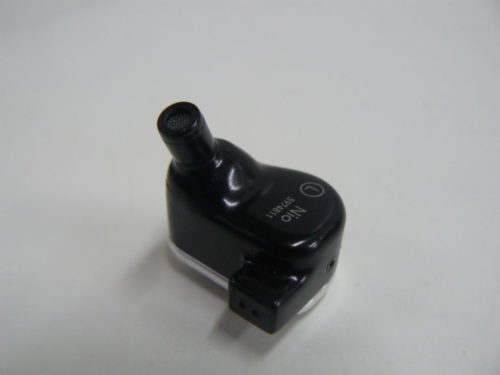
Design
The Nio has a number of unique components that make it stand out among the current IEM market. The Nio uses a 9m dynamic driver with 8 balanced armatures. The dynamic driver has the duty of providing output to the lows, while 6 of the armatures administer more low mids. 1 balanced armature is used for the high mids and a tubeless tia driver to deliver the rest of the highs. Using 64 Audio’s tia technology, the Nio becomes a mix of a lot of their past designs. In effect, this creates an all in one design that includes 64 Audio’s best build designs.
With the Nio, it appears as if responsible listening was a focus for 64 Audio. The Nio uses an air pressure exchange (apex) system that controls ventilation to reduce air pressure in aim to help prevent ear fatigue. When you insert any pair of earbuds in your ears there’s a significant amount of ear pressure stored up in your ear canal. The constant output volume going vibrating your eardrum can sometimes be dangerous and can cause long term hearing damage. The apex system uses two sets of modules. The MX module uses -10dB, the M15 -15dB, and the M20 -20dB. Switching between the nodes will affect the sound signature, but will never act to ruin it in any significant way.
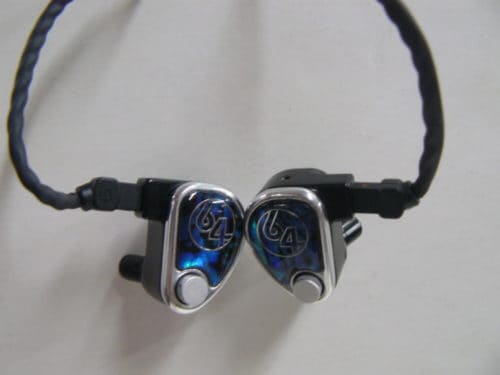
Output
Along with its safe, isolating design, the Nio also supports a sensitivity of 105dB with an impedance of 6 Ohms at 1kHz. The Nio presents a fairly low impedance that gest balanced out by its apex system. Its frequency response is 10Hz-20kHz, making for a low-end focus and extended sub-bass. Let’s see how well sonic fidelity is represented in the Nio.
Soundstage
Depending on which module you’re using, the soundstage can have subtle changes.
Using the M20’s creates a narrower stage. The switch is just noticeable but doesn’t hamper the experience in any significant way. This is due to the excellent layering and separation, which adds much-needed depth to these IEMs. Low-end elements are especially spacious and present each band with notable clarity. Spatial imaging is the element that is most affected by the apex system, as pan information seems just a little too limited depending on what you’re listening to, but might not be a problem for others.
Low End
The bass impresses with its reach and sharp definition. Some bass bands receive an ample boost in gain, which shows a great amount of smoothness avoiding a bloated resonance. There’s a definite sense of depth, with a soft noticeable sub-bass dissipation. In tracks such as “Dead Flag Blues” from Godspeed You! Black Emperor, the bass strings could be felt deep in your chest, while the eerie voice-over narration dissolves into your throat, creating a feeling of dread that best represents the desired tone of the track. You won’t get any significant punch from this bass, it’s more meant for long drones of low-end response, like in post-rock, or more avant-garde tracks.
Mids
I was happy with these mids, as they showed an ample amount of texture in the low mids rather than boost, and exudes the same smooth qualities that the bass range has. There’s an audible body to the mids that starts to flatten out toward the middle, then becomes more colorful in the mid highs. We don’t get the gain that there is in the lows but presents a more balanced nature to the mid-range. Vocal registers in this range don’t have a problem standing out, but a more powerful performance will show more resolution than a more subtle, folky vocal. Low mid registers definitely show the best in the Nio, as tracks like “The Recluse” from Cursive presents a buttery smooth Cello, placed with a rich response.
Highs
Like the majority of the sound signature, the highs present a smooth response with plenty of detail to consider. It happens to have the lowest output of gain, but make up for it in its airy tonality, complimenting the high mid instrumentation with a sense of clarity. High piano keys have a layered glimmer to them, as well has high strings. I was listening to “Better Git It in Your Soul” by Charles Mingus, and the ride cymbal had a crisp definition that glittered my ears with a nice grove.
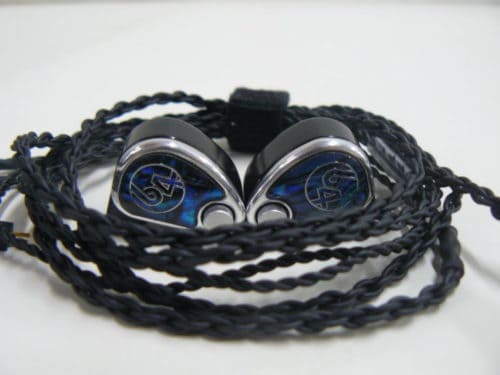
Summary
64 Audio has designed a nifty product for the IEM market. Their mix of different driver systems from older models, and new apex system, create an earphone, unlike the rest. $1,699 is pretty reasonable for customers seeking an IEM of this stature, as the quality could easily be worth more. I do believe certain genres like Jazz, or classical make more from the fidelity of this earphone, as the smooth signature mixed with the apex system makes for a more easy listening experience.
Pros and Cons
Pros: Smooth signature, apex design, pretty look
Cons: Narrow signature depending on modules, long nozzle
64 Audio Nio available at Audio 46
MAJORHIFI may get a commission from retail offers.
Compare the ranking of various headphones, earbuds and in-ear monitors using our tools.
Discuss this, and much more, over on our forum.
---MAJORHIFI may receive commissions from retail offers.


